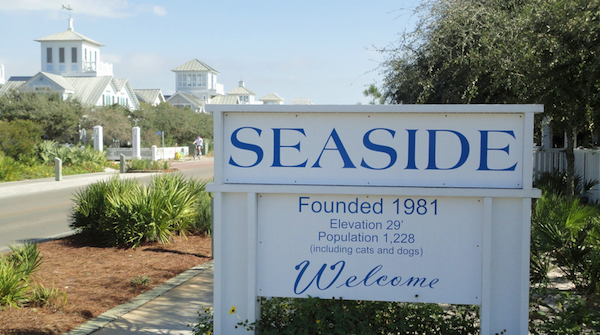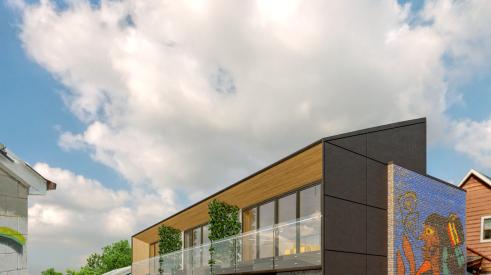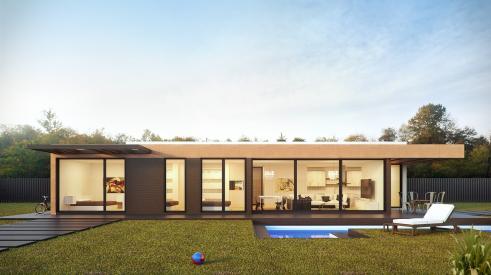Reading the first paragraphs of Sue Bady’s story on Traditional Neighborhood Development in this issue brought back a rush of memories. I traveled with colleagues to Seaside about 10 years ago, to experience firsthand the much-vaunted prototype of New Urbanism designed by Andrés Duany and Elizabeth Plater-Zyberk. My co-workers and I stayed in some of the cottages there, ate in its restaurants, worked in its meeting rooms, and walked nearly every one of its streets.
It was charming, that’s for sure. The gaily painted houses, every one of them different, with their picket fences and deep porches, the public buildings in the central square, and lovely pocket parks seemed like an evocation of an American past that existed now only in our dreams.
And like a dream, Seaside didn’t seem quite real. I know that’s not a fair assessment. We were tourists and, in our limited time there, merely caught a glimpse of the town’s veneer. But I couldn’t help thinking that the location scouts in search of a setting for the movie The Truman Show couldn’t believe their good fortune when they saw it.
Over time, I understand, things have changed at Seaside. More and more people live there full-time now. The school system has grown to include more grades, and there are additional opportunities to work and shop in the immediate area.
I think my expectations of Seaside may have been colored by calling it New Urbanism. It seemed more like Old Urbanism, in that it harked back to the design, layout, and community engagement opportunities of pre-World War II small towns in the U.S. But where the underlying concept has had the most lasting and beneficial effect is in what we might call New Suburbanism.
One has only to look at more recent, large-scale developments, such as Stapleton, in Denver, and Mueller, in Austin, Texas, to grasp the massive changes wrought by Seaside on suburban master planned communities. In the years following the war, these properties would most likely have been turned into acres and acres of housing and not much more. With their built-in commercial and retail areas, varied housing types, and dedicated open space, homes in these new suburban developments command a premium over others in the area. This type of master plan has now become the standard instead of the exception.
These days, Duany has a new vision and hopes it will meet with the same success. Called Lean Urbanism, it advocates an alternative to the highly regulated planning, permitting, and inspection process that currently exists within TNDs and home building and development in general. At its most radical, Lean Urbanism would allow people to build simple and functional homes by themselves without fear of running afoul of the law.
In a more mainstream interpretation, it would mean relaxing the restrictive zoning regulations of cities, letting builders and developers construct single-family houses with accessory units or small apartment buildings, for example, on lots that larger developers feel are not worth their time.
Duany’s reasoning behind these ideas is that, while our building codes are valuable, they are also very expensive to implement and prevent many Americans from owning their own homes. So he suggests an experiment: Create “opt-out zones” where people, using free house plans, can build their own dwellings in small stages, without architects, permits, or inspections.
This is occurring now, without official sanction, in some areas of Detroit, where the prospect of being able to create one’s own living space is luring young people from around the country. It’s another kind of dream, but like New Urbanism, it could work. As Duany says, it did once before, for the several centuries that Americans built their own homes and neighborhoods for themselves.
---

Denise Dersin is the Editorial Director of Professional Builder and Custom Builder. ddersin@sgcmail.com
Advertisement
Related Stories
Smart Growth
Smart Growth the Way Forward?
In the face of greater housing underproduction than previously anticipated, more than 5 percent of the total national housing inventory, a third way is being championed by report authors and housing researchers and economists.
Announcing the Race to Zero Grand Winner
The top prizewinner of this student competition offers a site-efficient and energy-wise home on a dense infill site in a challenging climate
Affordability
Boulder Considers Adding More Accessory Dwelling Units
The City Council of Boulder, Colorado is currently considering loosening restrictive policies regarding the construction of accessory dwelling units (ADUs).







